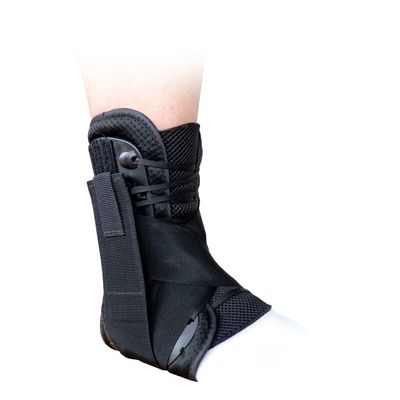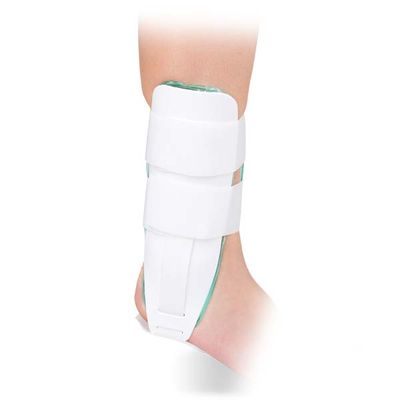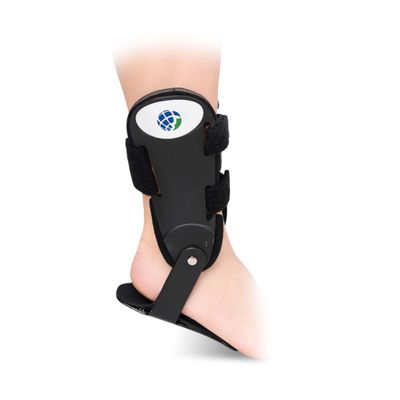Table of Contents
Injury Boot, Walking Boot / Low Top & High Top
An injury boot, often referred to as a medical boot or walking boot, is a type of orthopedic device used to immobilize the foot and ankle to promote healing after an injury. Here’s everything you need to know about injury boots:
What is an Injury Boot?
An injury boot is a protective, supportive device designed to stabilize the ankle, foot, or lower leg after an injury or surgery. These boots are commonly used to:
- Protect the foot and ankle during healing.
- Immobilize the injured area to prevent further damage.
- Help individuals maintain mobility while their injury heals.
Injury boots are most often prescribed by healthcare professionals after:
- Fractures (broken bones) in the foot, ankle, or lower leg.
- Severe sprains or ligament injuries.
- Achilles tendon injuries.
- Post-surgical recovery.
Key Features of an Injury Boot
- Hard Outer Shell: Provides structure and protection to the injured area.
- Soft Inner Padding: Offers comfort and helps prevent irritation or pressure sores.
- Velcro Straps: Allow for adjustable fitting to ensure that the boot is snug but not too tight.
- Rocking Sole: A rounded sole to simulate a normal walking motion, making it easier to move while wearing the boot.
- Optional Air Bladder: Some boots come with air bladders or pumps to adjust the pressure inside the boot, improving comfort and fit.
Types of Injury Boots
Short Walking Boot
- Used for injuries located in the foot, ankle, or lower part of the leg.
- Less cumbersome and lighter than a full boot, allowing for more flexibility in movement.
Tall Walking Boot
- Extends higher up the leg to provide extra support.
- Used for more severe injuries or fractures of the tibia, fibula, or higher ankle injuries.
Air Cast Boot
- Features an inflatable air bladder system to increase compression and fit.
- Helps to reduce swelling and provide a more customized level of support.
When is an Injury Boot Used
Fractures: If you break a bone in your foot, ankle, or lower leg, an injury boot is commonly prescribed. It helps keep the broken bone in the correct position to heal while allowing you to move.
Severe Sprains: For Grade 2 or Grade 3 sprains, where there’s ligament tearing or severe overstretching, the boot immobilizes the joint to allow proper healing.
Achilles Tendon Injuries: When the Achilles tendon is torn or injured, a boot can prevent excessive movement and provide support during recovery.
Post-Surgery: After surgeries like foot reconstruction, bunion removal, or ligament repairs, injury boots help protect the surgical site while enabling controlled mobility.
Benefits of an Injury Boot
- Mobility: Unlike traditional casts, an injury boot allows patients to walk while still protecting the injured area. This aids in a quicker return to normal activities.
- Adjustability: The straps, padding, and air bladders in some boots allow for easy adjustments depending on swelling or discomfort levels.
- Non-Invasive: While offering the support needed for healing, it is also removable, which means you can take it off for cleaning or adjustments as needed.
How to Wear an Injury Boot
Ensure Proper Fit: The boot should fit snugly but not cause discomfort or circulation issues. Adjust the straps and any inflatable parts accordingly.
Follow Medical Advice: Always follow your doctor’s instructions on how long to wear the boot each day and when it can be removed.
Use a Shoe Balancer: If you feel off-balance when walking with an injury boot, using a shoe balancer on the opposite foot can help equalize your stride and prevent further injury.
Wear Appropriate Socks: Always wear a sock underneath to prevent chafing and keep the boot clean. Make sure the sock is long enough to extend past the top of the boot.
Common Brands of Injury Boots
- Aircast: Known for its air bladder system, offering additional comfort and custom fit.
- Ossur: Offers a range of high-quality injury boots with built-in shock absorption and an ergonomic design.
- DonJoy: Popular for its lightweight and easy-to-wear designs, often with pneumatic features.
Walking in an Injury Boot
When using a walking boot, the design allows you to walk relatively normally, though it may feel awkward at first. The boot’s sole is usually curved to help simulate the natural heel-to-toe motion, but walking aids like crutches or a cane may be recommended initially to reduce pressure on the injured leg.
Considerations When Using an Injury Boot
- Avoid prolonged standing or walking without breaks, especially early in the healing process, as this can cause discomfort or slow down recovery.
- Check for signs of skin irritation, blisters, or swelling, and adjust the boot or consult your doctor if discomfort persists.
An injury boot is a valuable tool in promoting recovery while allowing you to maintain some degree of mobility. If you sell braces and splints, offering a range of injury boots for different needs and injuries could be a great addition to your product line.
Foot & Ankle Brace






